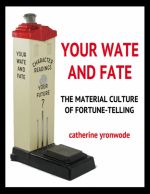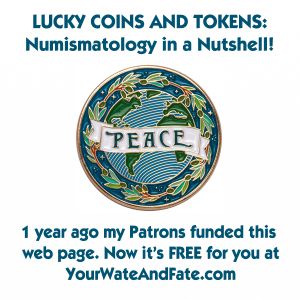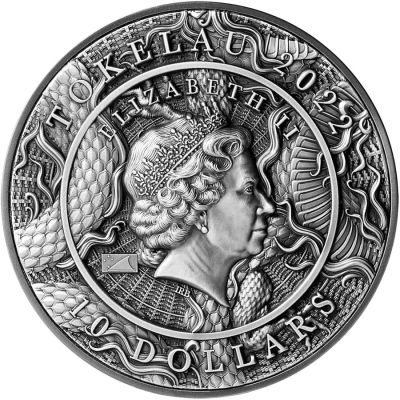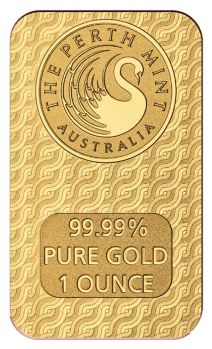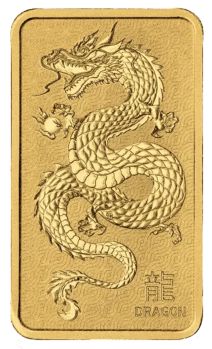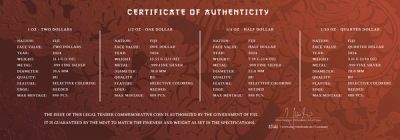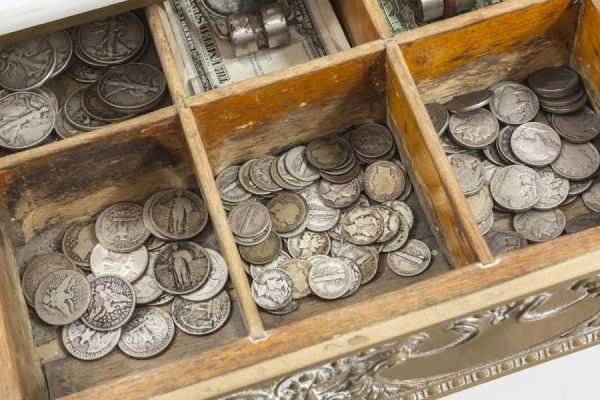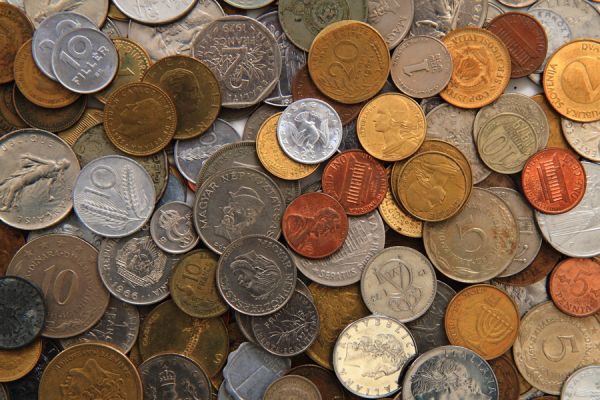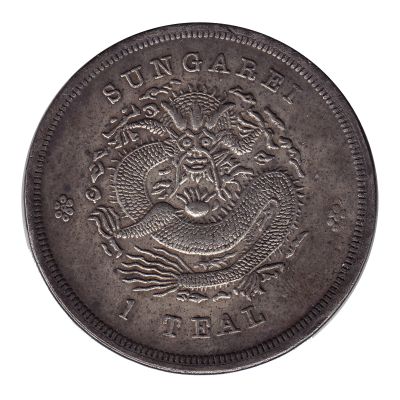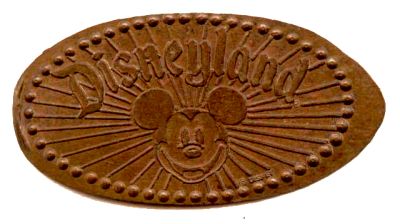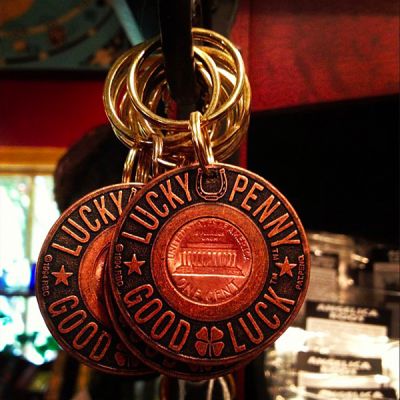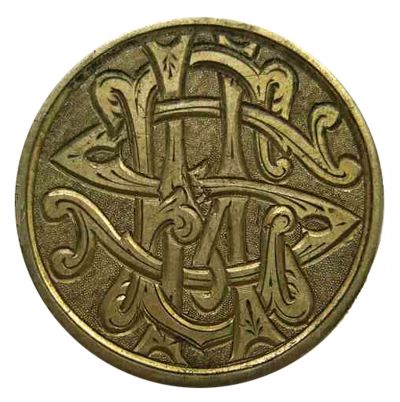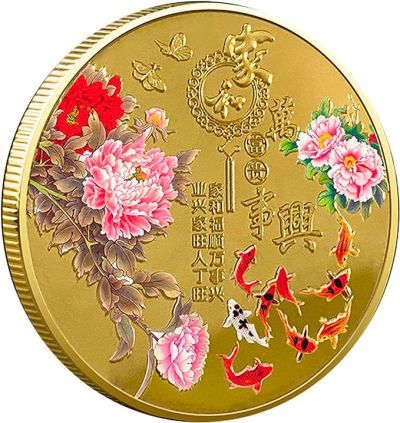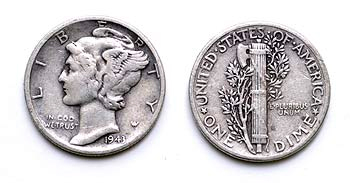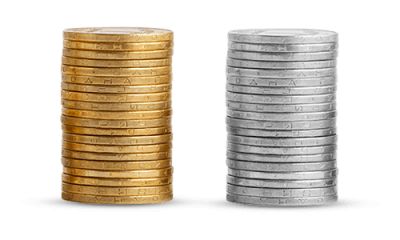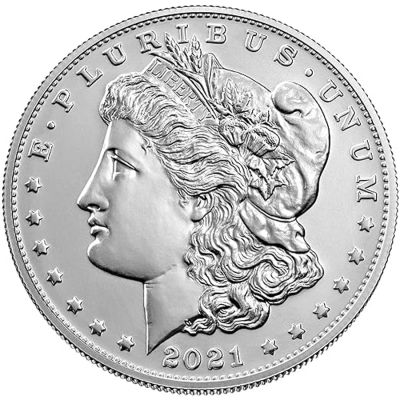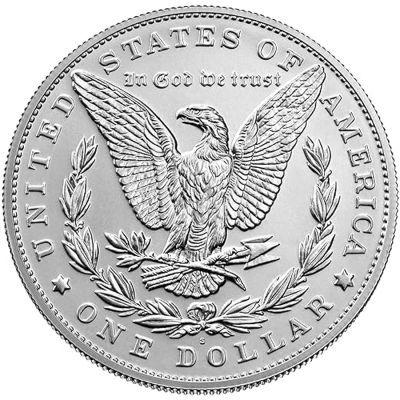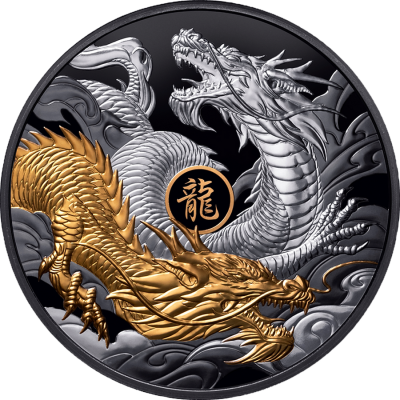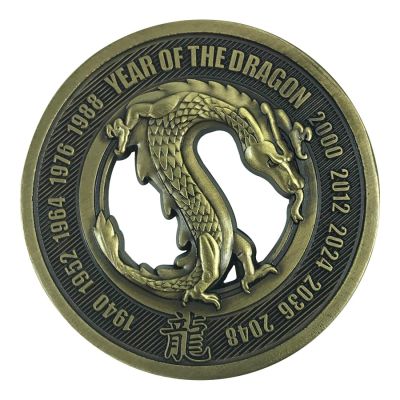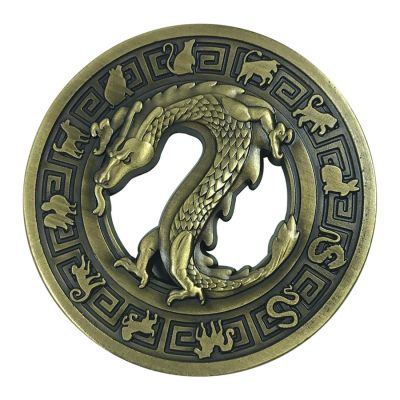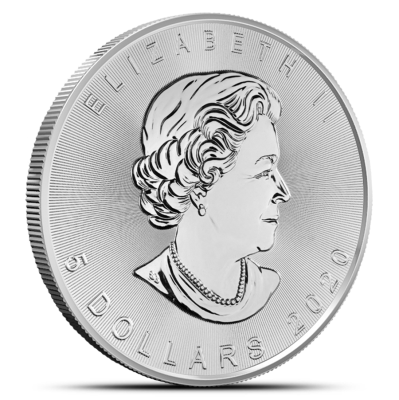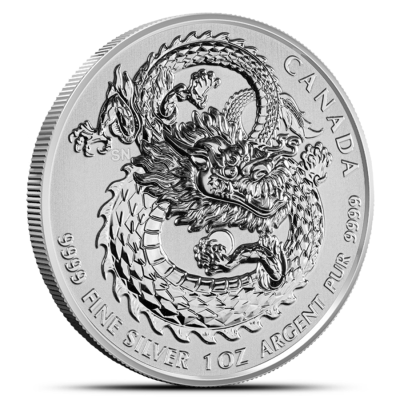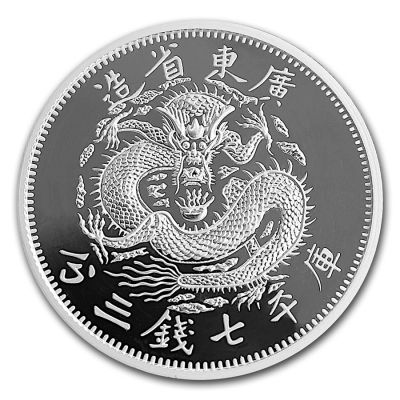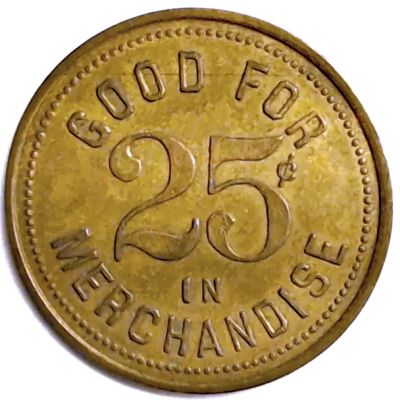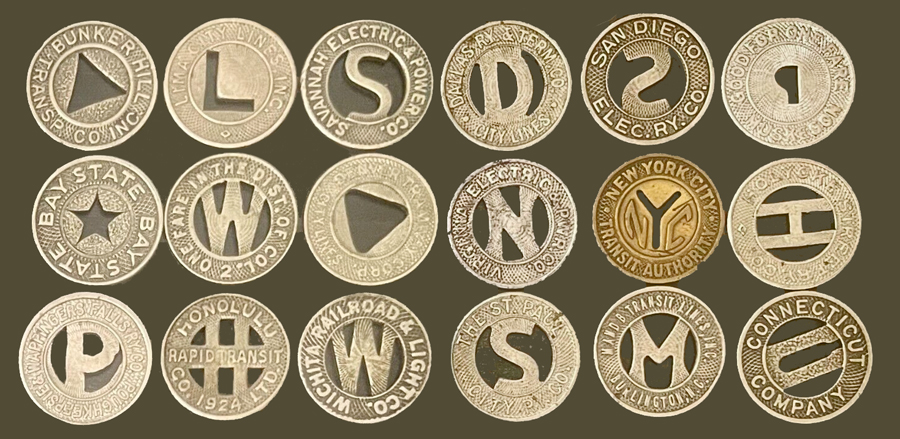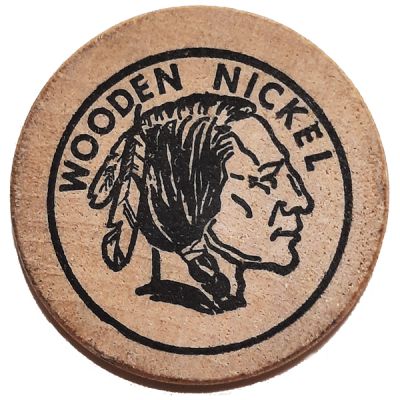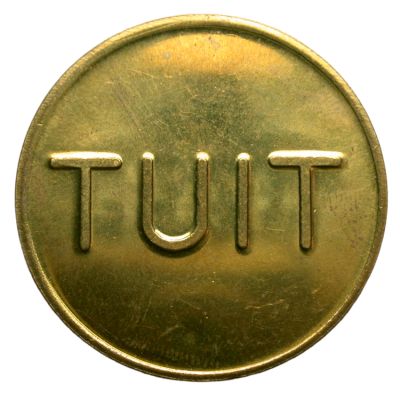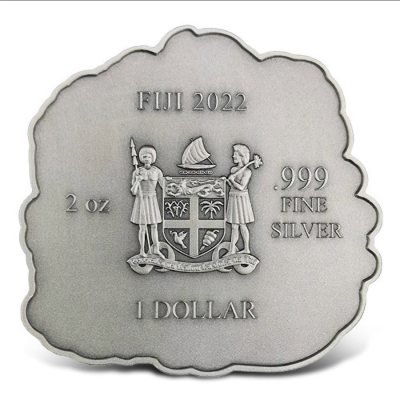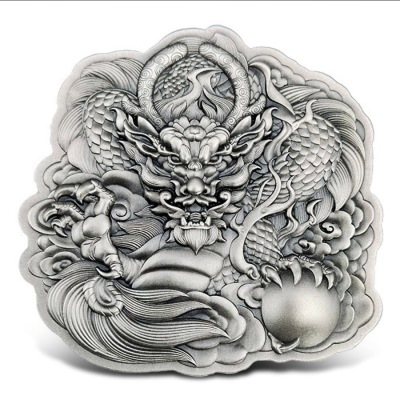Category:Lucky Coins and Tokens
My Patreon supporters paid for this page and had access to it one full year before the public did.
- Patreon Release Date: February 21st, 2024.
- Public Release Date: February 21st, 2024.
Please tell your friends that they can subscribe to my Patreon stream for $2.00 per week:
Patrons: To discuss this and other Patreon pages with me, join my private Patreon Forum:
Support Your Wate and Fate
All of the material you have access to here -- the instructive booklets, the nostalgic postcards, the boldly graphic ephemera, and all of the historical information researched and shared from the mind of the woman who is making it all happen -- can easily fit into one 8 x 10 foot room in an old Victorian farmhouse, but you would never see it without the investment of the time it takes to produce such a site and the caloric input such a site requires in the form of food for the writer, graphic designer, and database manager, as well as the US currency needed to pay for the computers, software applications, scanners, electricity, and internet connectivity that bring it out of that little room and into the world.
So, as you can see, this site is the darling of many, and it is growing at a rapid rate ... but although it is "free," there also is a cost. The financial support of my Patreon subscribers -- my Patrons -- underwrites this cost.
In order to enjoy our collection of Lucky Coins, Bullion, and Tokens, a few numismatic definitions are in order.
Antiqued Coins
A deliberately tarnished finish on silver coins that makes them look old, but retains their details perfectly, is said to have been antiqued. The antiquing is done by briefly dipping the coin in a chemical bath. Silver coins that actually are old do not have the dull grey antiqued finish; they are worn down by repeated handling and their tarnish is the result of environmental factors.
Bar Coins
A bar is a rectangular-shaped coin or piece of bullion. Bars may be minted or they may be cast or poured. The same mints that produce circular coins or bullion may also produce bars.
Bullion Coins and Bullion Rounds
For reasons not always entirely clear, nations are reluctant to abandon the use of precious metals as legal tender, so most of them now issue what is known as denominated bullion coinage -- coins of a known weight and purity of precious metal that are given an arbitrary denomination, but are fully expected to be traded on the open market with reference to the daily spot price of the metals from which they are made, or their rarity or condition, to which may be added a premium or surcharge based on their collector value.
The most popular weight for bullion coins is 1 troy ounce (which is not the same as a commercial or avoirdupois ounce), and the standard of purity is generally .999 pure, in contrast to the 90% silver and 10% copper of old U.S. coins such as the Morgan dollar, for example. Thus, in addition to its base metal "clad" coins, the U.S. government currently issues 1 troy ounce .999 pure silver coins called American Silver Eagles, with a One Dollar denomination, in the full knowledge that they will be treated as bullion coins on the open market and their value will fluctuate daily at 25-30 times their denominated value. Likewise, the 1 troy ounce coins called American Gold Eagles, containing 91.67% gold, 3% silver, and 5.33% copper, are issued by U.S. Mint with a Fifty Dollar denomination, in the full knowledge that their market value will be from 38 - 44 times that value, depending on the spot price of gold.
Once the denominations on the coins -- especially silver coins -- were disconnected from any set value, non-governmental mints began to produce their own disk-shaped bullion pieces. If circular, these are generally called "bullion rounds" or "rounds" to distinguish them from "bullion coins." The most popular weight for silver bullion rounds is 1 troy ounce, but they can be found in higher weights, up to a kilo (2.2 pounds) or more.
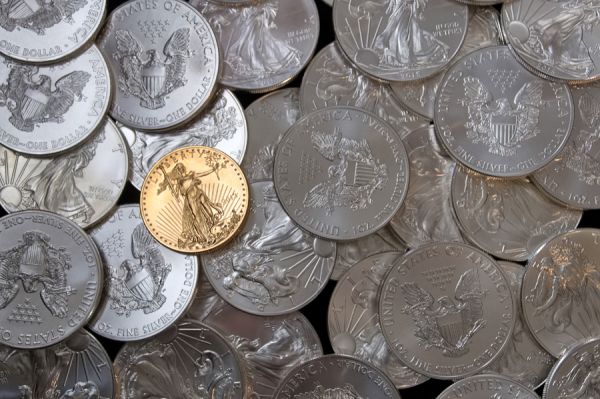
Certificate of Authenticity or CoA
Collectible coins and bullion, especially those with low mintage numbers and high premiums, are sometimes sold with a certificate of authenticity or CoA. The CoA may be mass-printed or serially numbered. I may includes information about the coin, such as its metal composition, purity, weight, and mintage number, and it may also give a history of the mint that made it, the coin's designer, the nation that issued it -- and it may also provide details about the history or folklore associated with the devices on the coin.
Some coins with CoAs are sold in presentation boxes, custom assay cards, or acrylic capsules. Unboxed, uncarded, and unencapsulated coins that have no CoA are sold "raw." Raw coins may be sent to one of the several grading services and, for a fee, they will come back graded and "slabbed" in rectangular plastic cases. Chinese counterfeiters are unfazed by this: they not only counterfeit the coins, they also counterfeit the certificates of authenticity, the capsules, the cards, and the graded slabs.
Challenge Coins
Challenge coins are not actually coins -- they are tokens that have a unique military history, which also extends to law enforcement, emergency services personnel, sports teams, and game players. They were originally to be carried so that if one's membership in a group was challenged, they could be presented as proof of allegiance. Their use has expanded to include being given out as a form of membership token, or distributed as commemoratives at important events. The Zhongshan Kangda Craft Factory in Zhongshan, Guangdong, China, and Coinsun Crafts Industrial Ltd, Jude Road No. 12, Haizhu District, Guangzhou, Guangdong, China, are currently a couple of the larger manufacturers of custom challenge coins in enamelled and plated zinc alloy, brass, bronze, iron, and copper.
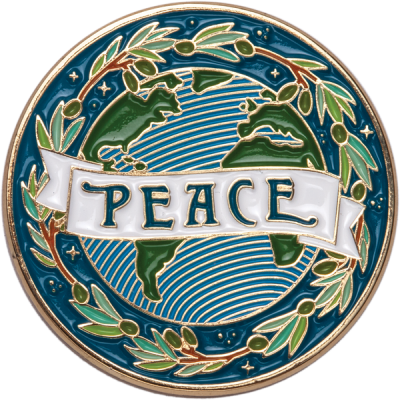
Circulating Coins
Coins, by definition, are money issued by a body -- usually a nation -- that has the authority to set their value by marking them with a denomination that includes a number and the name of the coinage of the issuing body, such as "One Dollar" or "One Pound." Aside from a few coins specially minted as proof coins and never released to the public, most coins, referred to a "business strikes," go into circulation, where they gradually wear out as they pass from hand to hand. If a collector withdraws a coin from circulation it may be preserved and the amount of wear and other forms of damage can be graded, with a high "mint state" grade affects its valuation as a collectible.
Since the 20th century, when first the gold standard and then the silver standard were abandoned, the actual value of precious metals has fluctuated daily, because gold and silver, along with several other metals, are now treated as commodities, not as the reserves with which a nation backs its issuance of currency. This means that circulating coins minted of real silver or gold now have values aside from their collectible grade. They also have value as precious metals or commodities.
Coin Values
Coins can be valued in several ways:
- * Valuation by Denomination as Legal Tender: The "face value" of a coin is a unit number plus a denomination, for instance 1 cent, 10 cents, or 20 dollars. This is its value as legal tender, backed by the government that minted it. An 1881 U.S. Morgan dollar was issued with a face value of one dollar.
- * Valuation by Precious Metal Content: An item's weight times the spot price of the metals of which is comprised on a given day, which is also known as its "melt value," gives a rough valuation of its worth, although a reseller will pay "under spot" in order to offset the cost of doing business and to make a profit, and a refiner may pay less, to offset the work of separating and refining the various metals to purity. An 1881 Morgan dollar contains 0.7734 troy ounces of silver, which may be worth anywhere from $17.00 - 25.00, depending on the spot price of silver on a given day.
- * Valuation by Numismatic or Collector Value: These forms of valuation are based on an item's rarity, historicity, mint mark, condition, or aesthetic appeal. A collectible 1881 U.S. Morgan dollar may be worth from $25.00 to $2,000.00 or more, depending on its condition and where it was minted.
Colourized and Metalized Coins
A coin which has been decorated by adhering a thin plastic membrane on which a transparent colour image is printed is said to be "colourized." If a metallic ink was used, it is said to be "metalized." Holographic designs are also used on collectible coins and bullion to make them stand out, to mark their serial number, or to prevent counterfeiting.
Some coins are issued with official colourized variants, while other colourizations are after-market additions. Colourization and metalization are easily removed from a coin by dissolving the adhesive and gently peeling the layer of plastic away.
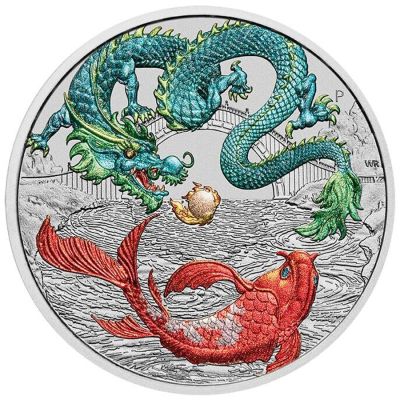
Counterfeit, Fake, Replica, Copy, and Fantasy Coins
The counterfeiting of valuable antique coins is a form of art forgery; modern coins with high value are also counterfeited and circulated, which is a form of fraud. China is the greatest source of counterfeits, fakes, restrikes, and fantasy coins. However, rather than risk Federal prosecution by counterfeiting contemporary coins, the manufacturers have taken to counterfeiting vintage or antique coins, especially those that were originally issued in silver or gold. These are generally made of a non-precious base metal such as a zinc alloy that is electroplated with a thin coating of silver or gold. The coins being faked include many old and rare U.S. coins, and also 19th and 20th century Chinese Dragon Money.
Sometimes the art on the fake Chinese Dragon coins is composited from that on mis-matching the obverse and reverse of old Chinese coins, and these are sometimes called "fantasy coins" because they are not direct counterfeits or fakes of any known coin.
One of the Chinese mints that makes fake American Morgan Dollar coins is Shengzhen Longgang Jufu Craft Factory, Nanwan Street, Longgang District, Shengzhen, Guangdong Province, China. Another is Liuezi Co. Ltd., 182 Longgang District, Shengzhen, Guangdong Province, China. These coins reach the USA through the Chinese marketer Temu. They may be marketed as "replicas" or marked "copy" to bypass U.S. laws against counterfeiting, but once they enter the United States, they are swiftly distributed at flea markets and pawn shops as genuine coins and intentionally sold as authentic numismatic collectibles on a wide variety of internet platforms, including eBay and Etsy.
Elongated Coins
Elongated Coins are also known as Rolled Cents, Pressed Pennies, and Squashed Coins. When coins are run through a rolling mill, the image on them is partially or wholly effaced and a new image takes its place. The first elongated cents were made at the World's Columbian exhibition in 1893, mostly on silver dimes. Elongated lucky pennies, Lord's Prayer and Ten Commandment Cents, and souvenir coins from amusement parks are just some of the many types of elongated coins that have been made since then. Collectors travel to the locations of penny rolling machines to drop their own cents into the slot, and they bring along their own real copper cants made before 1982 rather than use contemporary cents that contain zinc, which comes out as a smear of grey metal and does not harmonize with the coin's copper color.
Encased Coins
Encased coins are legitimate tender, often cents or pennies, that are surrounded by a metal holder upon which slogans such as "Keep Me and Never Go Broke" or advertising information is stamped. The encasing metal is sometimes fitted with a hole for a jumpring and attached to a key ring fitting.
Exonumia
Exonumia is a broad category that embraces things which look numismatic or coin-adjacent, but are not legal tender. Included are items made from repurposed coins, such as love-tokens, watch cases, rings, and pill-boxes, as well as items that look like coins but have no sovereign denominational value, such as trade tokens, elongated coins, encased coins, metal badges, souvenir medallions, wooden nickels and other similar items.
Lottery Scratchers
Lottery scratchers are coin-like disks bearing emblems of good luck that are used to scratch the rubbery coating off of lottery tickets. They are particularly popular in China and Taiwan, but recently colourised metal scratchers have become available in the United states as well. The images on them may include Chinese zodiac animals, lucky Koi fish (which have a sound-alike connection to a Chinese phrase that means "extra money" or "money remains"), and Peony flowers, which augur long life..
Lucky Coins
Although good luck tokens are commonly called "lucky coins," by non-numismatists, a true lucky coin is one that is legal tender. Any coin found or acquired under unusual or fortunate circumstances can be rightfully called a lucky coin by its owner, but in addition to personally lucky coins, every nation and culture also has its own folkloric list of inherently lucky monetary coins. Among the best known of these are the British sixpence, the American Mercury dime and Indian head cent, and the Dragon Money of many nations, which is minted every 12 years to commemorate the auspicious Year of the Dragon.
Mintage
A coin's mintage refers to the number that were issued by the mint that made them. Circulating coins are often minted in the millions per year, as are popular bullion coins. Then a mint declares that there will be no limit on the number struck, the coin is issued as "unlimited." At the end of the year, the number for the year is counted, and this number helps collectors determine if a coin is going to be common, scarce, or rare.
Collectible coins and bullion may be issued in limited numbers, and these numbers are announced ahead of sales. If the coins are limited to a low number, they may be issued with a serially numbered CoA or a surpinted serial number right on the coin.
Obverse and Reverse
The obverse of a coin its its front; the reverse is its back.
Plated or Gilded
When a thin layer of gold is adhered to a silver or copper coin through the electroplating process, it is said to be gilded or gold-plated. When silver is applied in the same way, the terms used are silvered or silver-plated. Other metals may also be used in plating, such as copper and ruthenium. The plating may cover the entire coin or just a few selected areas. Fancy silver coins, in particular, may be partially gilded to highlight certain parts of the design. The amount of gold plated to the coin is not enough to change the intrinsic melt-value of the underlying silver, but it is a common practice to issue partially or fully gold-plated coins in limited editions for aesthetic reasons and to increase their collectibility.
Poker Weights
Poker weights are objects used to hold playing cards down during the game of poker so that their faces cannot be seen; they often take the form of lucky coins or tokens.
Proof and Reverse Proof
A proof coin is one struck with a highly polished die, resulting in the flat areas or "fields" having a mirror-like finish. A reverse proof coin is generally only made for collectors. The flat areas or fields are frosted and the high relief areas are polished to a mirror finish. Such coins carry a high premium and are never circulated.
Relief, Bas-Relief, High Relief, and Ultra-High Relief
Coins made for circulation generally are provided with a slightly raised rim so that the sculptural relief of the image, known as bas-relief or low relief, stays below that level and is protected from wear. (One coin which is notable for the mis-matching of its edge rim and its bas-relief is the Morgan dollar -- Lady Liberty's cheek is just a tiny bit too high to be protected by the rim and is thus subject to scruffs, dings, and scratches. Even worse is the old Standing Liberty half dollar, about which the less said, the better.) High relief, in which the image sticks up above the rim, is found on collector coins and bullion; such pieces would be damaged almost immediately if placed in circulation. Ultra-High relief coins are those which are fully sculptural and almost leap out at the viewer. They may not even contain a protective rim. They are rarely handled, for fear of damaging them, and are usually stored in capsules or custom cases.
Restrike Coin
When an old coin design is re-used exactly as it first appeared, in the same metals and the same denomination, and is issued by the same mint, it is sometimes called a "restrike coin." If it is made of better metal than originally -- for instance silver instead of the original copper or bronze -- it may be called a "tribute coin" in that the issuing mint is paying tribute to one of its own old, well-loved designs but did not duplicate it exactly. For example, the Gold American Buffalo coin from the United States Mint is a copy of the old Buffalo nickel, but it is cast in gold and is larger than a nickel, and so it is considered a tribute, not a "restrike.
However, many so-called restrikes or tributes, especially those from China, are better characterized as "fantasy coins" even if they are actually made of precious metals, because they are minted with obviously new or reworked dies or they have been made with mis-matched die pairs, which happens when the combination of obverse and reverse designs, although accurate to themselves, never appeared together on a known coin.
Coins sold as restrikes, especially if they are made of base metal with a precious metal plating, are better labelled as counterfeits, replica copies, fakes, or fantasy-fakes.
Tokens
Although tokens are often called "coins," they are neither money nor bullion. They are generally round disks, about the same size as common circulating coins, like a United States quarter, but they are generally made of non-precious metals, such as brass, bronze, or copper alloys. As time has gone by, aluminum, zinc, and even plastic tokens have entered the market, but they lack the weight and feel of a coin, and so they are perceived as "cheap" or "tacky."
- * Advertising Tokens promote a product on the obverse, and may contain a good luck wish on the reverse.
- * Good Luck Tokens generally represent a wish such as "Good Luck" or "Happy New Year" on both sides.
- * Love Tokens are repurposed coins, often ground flat on one side and engraved with names or initials.
- * Political Tokens promote a candidate or political party, and may contain a good luck wish on the reverse.
- * Souvenir Tokens commemorate a place or event on the obverse, and may have a good luck wish on the reverse.
- * Throw-out Tokens are promotional tokens with good luck wishes given out by stage magicians and other entertainers.
- * Trade Tokens are coin-like items with a value for trade at a store; they are sometimes called "Good For" tokens.
- * Transit Tokens are coin-like items used to purchase rides on public transit; they represent a named place.
Wooden Nickels
Wooden nickels are traditionally imprinted with a buffalo or an Indian head on one side -- designs borrowed from the U.S buffalo nickel -- and a person's name, company name, or event date on the other side. They have retained their popularity long after the U.S stopped minting the buffalo nickel or 5 cent piece. They call to mind the joking admonition against getting scammed or cheated in trade, "Don't take any wooden nickels." After the Round Tuit became popular in the 1970s and 1980s, wooden Tuits appeared on the scene as well.
Round Tuits
Round Tuits, made of brass, base metal alloys, aluminum, wood, or plastic, are coin-shaped tokens that became popular during the early 1970s. Their name is a bit of word-play based on the phrase, "when I get around to it." As a joking motivation against procrastination, in the early years of their existence they were solemnly presented with a short piece of text printed on a display card which read: "This is a round tuit. Guard it with your life! Tuits are hard to come by, especially the round ones. It will help you become a much more efficient worker. For years you've heard people say, 'I'll do that when I get a Round Tuit.' So now that you have one, you can accomplish all those things you put aside until you got a Round Tuit. On both sides of the token the word TUIT appeared in capital letters. On some of these tokens, the other side has an advertising slogan or logo, and on others the presentation text is minted into the token, in shortened form: "This is a Round Tuit. Guard it with your life! Now that you have a Round Tuit of your own, you can accomplish all those things you put aside until you got a Round Tuit." Many variations of the Round Tuit have been produced, most of them by the manufacturers of wooden nickels, but the old metal Tuits are still the best, after all these years.
Unusually-Shaped Coins and Bullion
Although the disk shape has always been the most popular form for coins, both nationally authorized coins and privately minted bullion have been minted and cast in other forms, including ingots, minted bars, cast bars, and cast and stamped lumps, and figurative shapes.
The release of artistic figurative coinage and bullion with very low mintage numbers -- generally under 1,000 pieces -- is a popular way for small nations to add a high premium to a beautiful collectible with a low denomination, and thus bring in money from collectors world wide. Along with local flora and fauna coins and licensed character coins from popular culture, Dragon coins, because of their popular imagery, are one of the best ways for small nations to enter the field of what has come to be known as "collectible money."
To Discuss This Patreon Page
This Patreon Bonus Page is part of the series titled "Your Wate and Fate." To discuss it with me and the Patreon community, please visit our Private Patreon Forum at
http://forum.luckymojo.com/your-wate-and-fate-t93995.html
Thank you.
catherine yronwode
curator, historian, and docent
Your Wate and Fate
Special thanks to my dear husband and creative partner nagasiva yronwode for illustrations, scans, and clean-ups.
Pages in category "Lucky Coins and Tokens"
This category contains only the following page.
